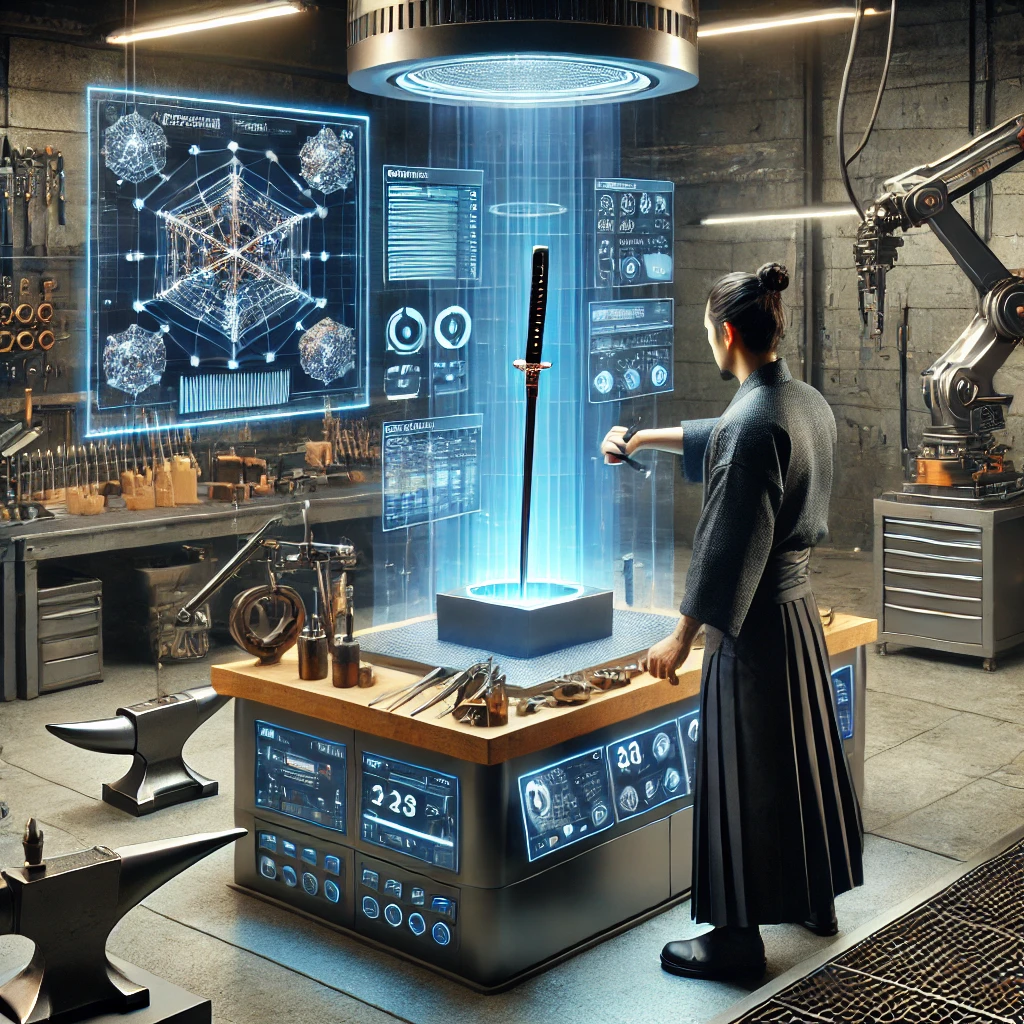The samurai katana sword has long been a symbol of Japanese culture. For centuries, it represented the honor and skill of the samurai. However, as Japan modernized, traditional weapons like the katana saw a decline in use. Yet, the Japanese katana remains an object of fascination. In the digital age, this interest has sparked a revival and preservation of katana swords.

I. From Weapon of War to Cultural Icon
Initially, the katana was primarily a weapon of war. Samurai wielded it with precision and grace. Over time, however, the samurai class faded. As a result, the katana lost its practical purpose. Despite this, its cultural significance never waned. The samurai katana sword became a symbol of Japan’s heritage. Today, the digital age has breathed new life into this ancient weapon.
II. The Internet’s Role in the Katana’s Revival
The internet has played a crucial role in this revival. Through online platforms, enthusiasts share their passion for katana swords. This global community has grown rapidly. Social media, in particular, has allowed collectors and historians to connect. They exchange knowledge, discuss techniques, and celebrate the Japanese katana. This exchange of information has been vital in preserving traditional craftsmanship.
III. Global Accessibility Through Online Marketplaces
Moreover, online marketplaces have significantly simplified the process of acquiring a samurai katana sword. Collectors from all corners of the globe can now easily purchase authentic katana swords with just a few clicks. In the past, access to these revered weapons was severely limited, often requiring extensive travel or connections within niche communities. Today, even rare and highly sought-after Japanese katana are available online, broadening their reach. This newfound accessibility has not only expanded the market but also played a pivotal role in the resurgence of interest in the katana, bridging cultural gaps and connecting enthusiasts worldwide.
IV. The Influence of Video Games
Video games have also contributed to the katana’s revival. Many popular games feature the samurai katana sword as a key weapon. Players experience the katana’s legendary status firsthand. These games often emphasize the katana’s craftsmanship and history. As a result, interest in katana swords has grown among younger generations. They seek to learn more about the Japanese katana and its cultural roots.
V. Digital Media and Craftsmanship Documentation
Additionally, digital media has enabled detailed documentation of katana-making. Craftsmen can now share videos of their processes online. These videos provide insight into the art of katana forging. Viewers witness the intricate techniques used to create katana swords. This transparency has sparked greater appreciation for the skill involved. Consequently, more people are pursuing the craft, ensuring the samurai katana sword remains alive.
VI. Virtual Museums: A New Way to Experience History
The digital age has also allowed for the creation of virtual museums. These platforms display vast collections of Japanese katana. Visitors can explore these collections from anywhere in the world. They learn about the history, design, and significance of katana swords. These virtual experiences are not only educational but also inspiring. They foster a deeper connection to Japanese culture.
VII. 3D Printing: A Modern Approach to Preservation
Furthermore, 3D printing technology has made reproductions of katana swords more accessible. While these replicas lack the authenticity of traditional Japanese katana, they allow for hands-on learning. Aspiring craftsmen can practice their skills using these models. This practice helps preserve the techniques needed to forge a samurai katana sword.
VIII. Challenges in the Digital Age
However, the revival of the katana in the digital age isn’t without challenges. The market for katana swords has seen a rise in counterfeit products. Some online sellers offer poorly made replicas as authentic Japanese katana. This trend threatens the integrity of the katana’s heritage. Collectors must be vigilant to ensure they purchase genuine katana swords.
Moreover, the digital age has led to a commodification of the samurai katana sword. Some view it as just another collectible. This attitude risks overshadowing the katana’s cultural significance. It’s crucial to maintain respect for the Japanese katana as a symbol of tradition. Enthusiasts must balance their passion with a reverence for its history.

IX. Conclusion
In conclusion, the digital age has both revived and preserved the samurai katana sword. Through the internet, video games, and digital media, interest in katana swords has surged. This resurgence has ensured that the Japanese katana remains a vital part of cultural heritage. However, it’s essential to protect the integrity of this symbol. As we move forward, the samurai katana sword will continue to inspire and captivate, bridging the past with the present.